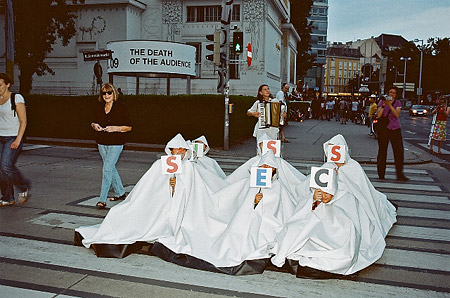Hito Steyerl, "Is a Museum a Factory?" e-flux journal, no.7 (June 2009).
Clement Greenberg, "Modernist Painting," Arts Yearbook 4 (1961): 103-108.
Bérénice Reynaud, "Stuart Sherman: Object Ritual," trans. Thomas Repensek, October 8 (Spring 1979): 58-74.
See →.
See →.
See Michel Foucault, "What is an Author?," trans. Donald F. Bouchard and Sherry Simon, in Language, Counter-Memory, Practice. (Ithaca, New York: Cornell University Press, 1977), 124-127.
See Jacques Rancière, "The Emancipated Spectator," Artforum (March 2007): 271-80.
See →.
Slavoj Žižek, "The Interpassive Subject: Lacan Turns a Prayer Wheel," in How to Read Lacan (New York: W.W. Norton & Company, 2006), 23.
Pierre Klossowski, La monnaie vivante (Paris: E. Losfeld, 1970).
See →.
See →.
See Havelock Ellis, Sexual inversion (Philadelphia: F.A. Davis Co., 1901).
An extended version of this interview will be published in the Secession catalogue The Death of the Audience in spring 2010.
